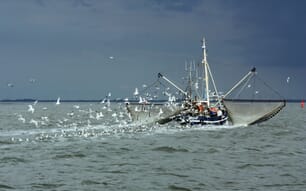Dead zones are low-oxygen areas in the ocean where sea life including fish, crabs and clams cannot survive. In shallow coastal regions, dead zones can be caused by air pollution and runoff of excess fertilizers from farming.
Gary Shaffer and colleagues simulated the effects of human-induced greenhouse gas emissions with a low-complexity Earth system model for 100,000 years into the future and their results were published on the online publication: Nature Geoscience.
They evaluate two emissions scenarios — moderate and high emissions — used by the Intergovernmental Panel on Climate Change (IPCC).
In their simulations the surface ocean loses oxygen mainly in response to warming, through a decrease in the solubility of the gas in seawater. However, the deep ocean is also affected — a result of a slower overturning circulation, compared with today's climate, which brings oxygenated surface waters to depth.
While dead zones in coastal areas can be mitigated by controlling the use of fertilizer, expanded dead zones caused by global warming will remain for thousands of years and have harmful long-term effects on ocean ecosystems, Shaffer said.
The researchers conclude that substantial reductions in fossil-fuel use over the next few generations are needed to avoid extensive ocean oxygen depletion.
Global Warming and the Suffocating Oceans
GLOBE - Continuously high greenhouse gas emissions could lead to long-term oxygen depletion in the global ocean, potentially with significant negative effects on fish and other marine animals for thousands of years.

